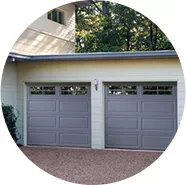When you’re getting ready to install insulation in your new home or re-insulate your existing home, you need to talk to professional insulation contractors, but it’s helpful to know some background information beforehand.
Knowing a little bit about insulation—including the different types and basic information about them—can make communication with the insulation company much easier, and you won’t be as confused.
There are a number of different insulation materials—the one you use (and how much you install) will depend on factors such as:
- Where you need to insulate
- Whether or not it’s a new construction or retrofit project
- Where you live
- How old your home is
- And more
Different Types of Insulation
The different types of insulation materials include:
Fiberglass
Fiberglass insulation is one of the oldest types of insulation. It can be either a blanket system (rolls and batts) or loose-fill/blown-in. Usually fiberglass insulation is pink, but it can be different colors.
How it works: Fiberglass insulation traps heat in its tiny fibers, stopping conductive heat flow.
Where it’s installed: Fiberglass insulation can be installed anywhere—attic floors, walls, crawl spaces, basements and walls.
Cellulose
Made of up to 80 percent recycled material (mostly newspaper), cellulose insulation is one of the most environmentally friendly types of insulation available. It is also one of the best types of insulation to use for soundproofing.
How it works: Cellulose insulation, like fiberglass, stops conductive heat transfer.
Where it’s installed: Cellulose insulation can be installed in walls, attics, basements and crawl spaces.
Spray Foam
Superior at sealing and filling in small gaps and crevices in your house’s envelope, spray foam insulation can help reduce outside noises and make your home more comfortable year round.
How it works: Spray foam stops convective heat flow.
Where it’s installed: Spray foam insulation is typically installed in the walls.
Radiant Barrier
Radiant barrier insulation works differently than thermal insulation. Radiant barriers are great warm weather products, especially for homes with cooling air ducts in the attic.
How it works: Reflective insulation stops radiant heat.
Where it’s installed: Radiant barrier insulation is installed in attics, right under the roof. It helps reflect heat from the sun, keeping your home a lot cooler and more comfortable (in fact, homes with radiant barrier insulation can be up to 10 degrees cooler than homes with no attic insulation).
If you need insulation contractors in central Indiana (in the Indianapolis, Muncie and Kokomo areas), there’s only one name you need to know: Overhead Door Co. of Indianapolis & Muncie! We install high-quality spray foam and fiberglass.
Now that you know a little bit more about the different types of insulation, you can talk to our insulation experts to determine which type(s) you need and where you need to insulate.
Contact us today to learn more!













